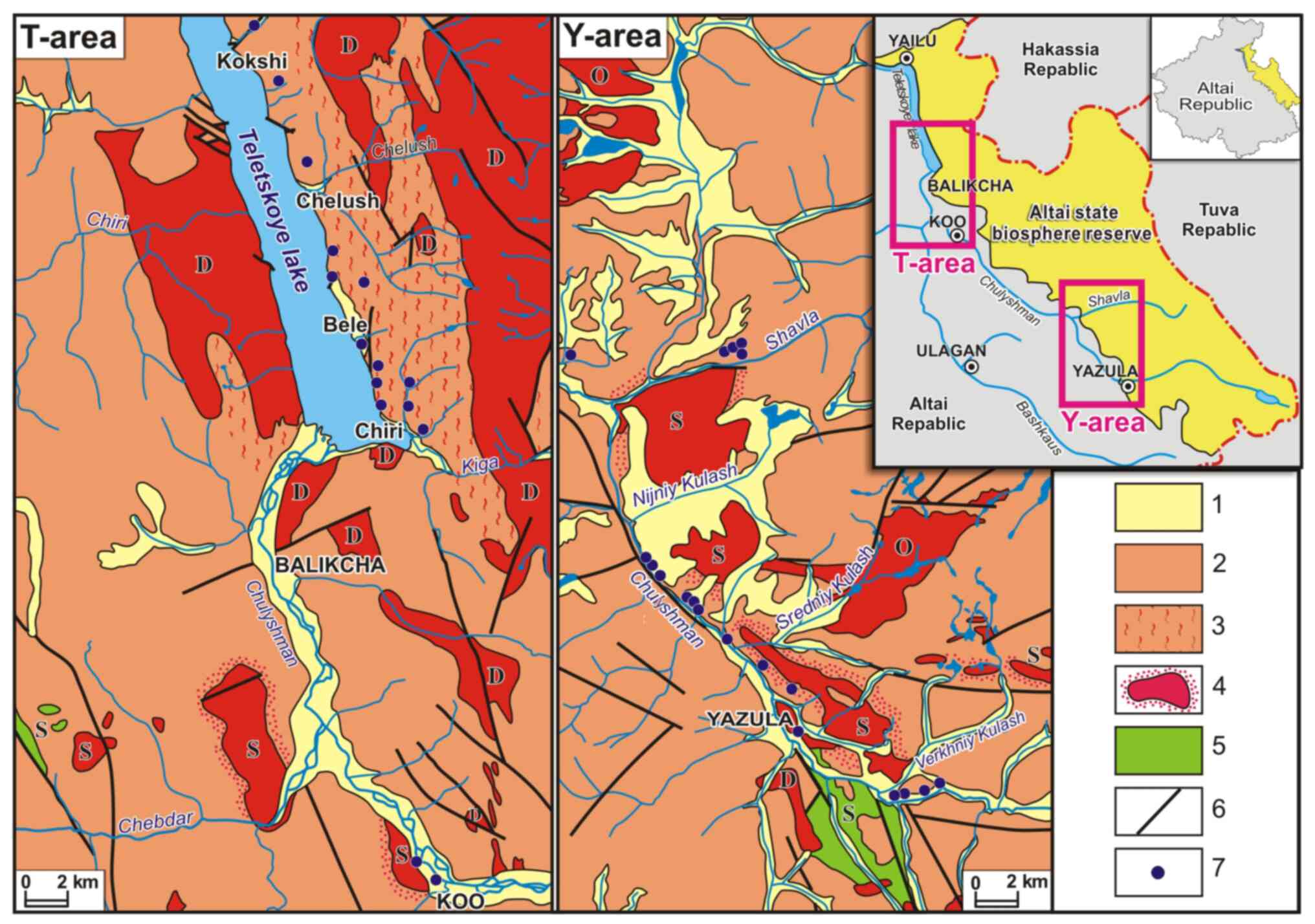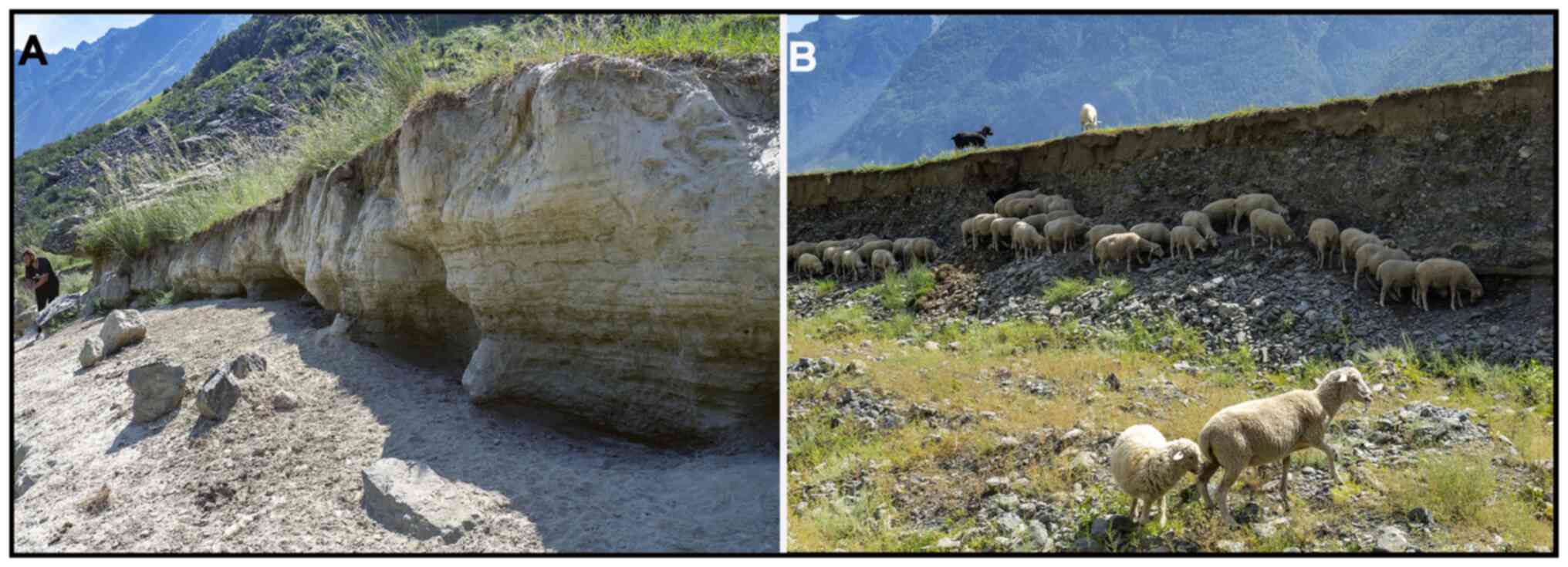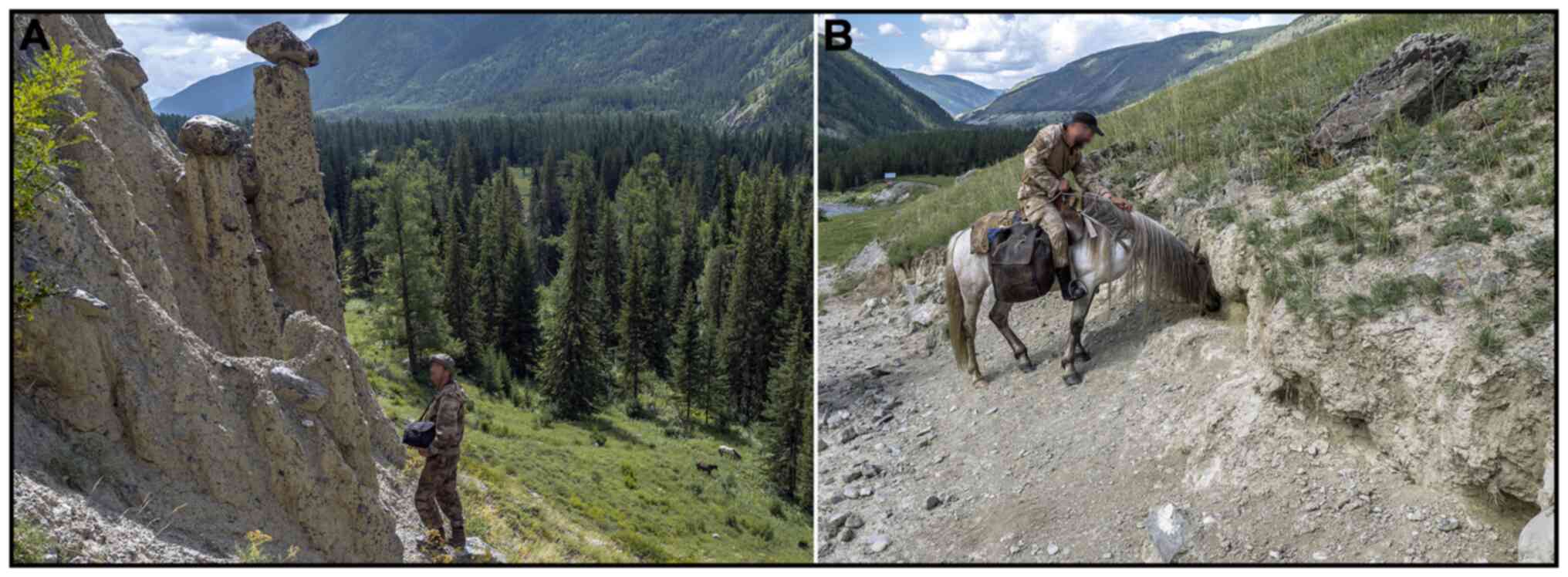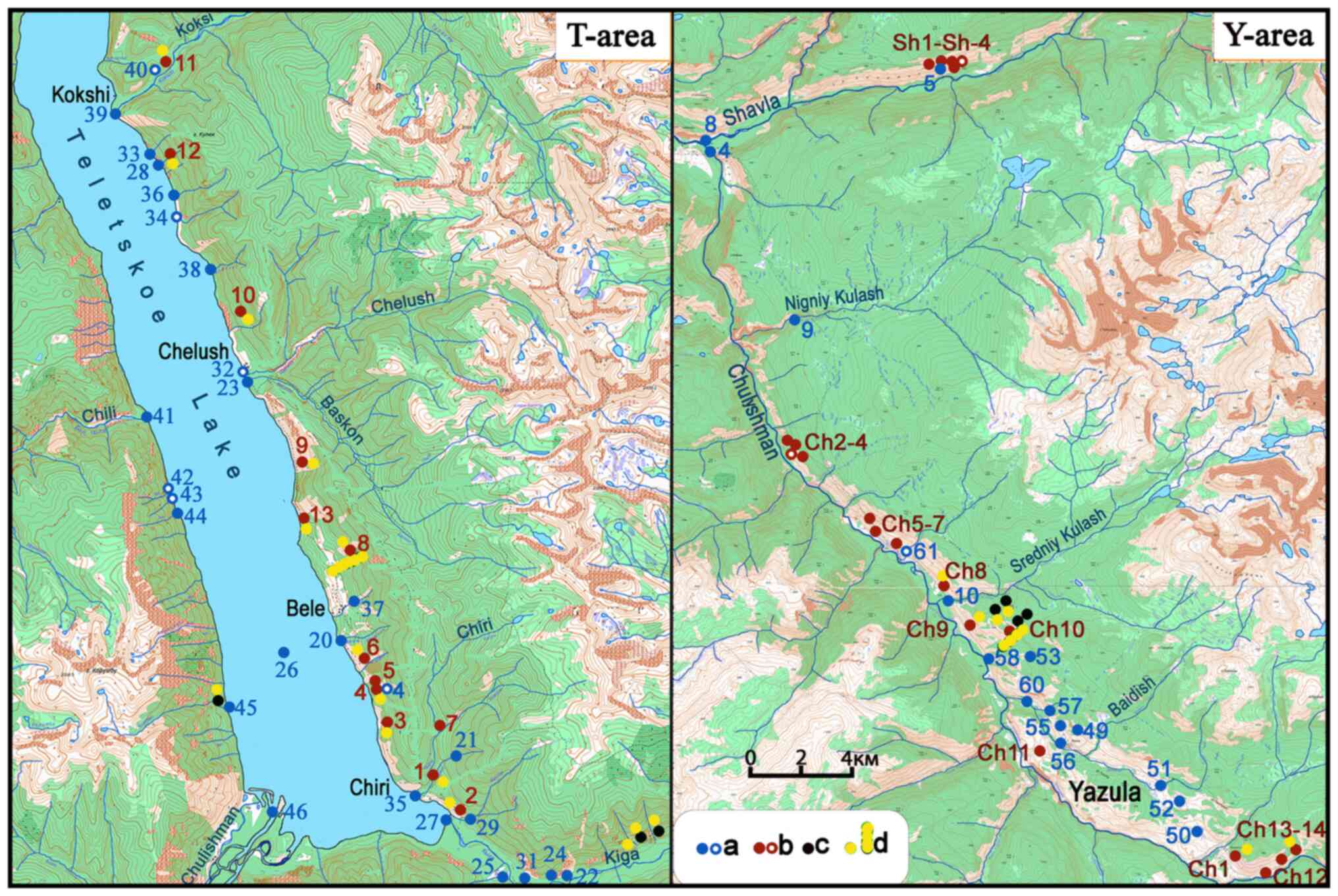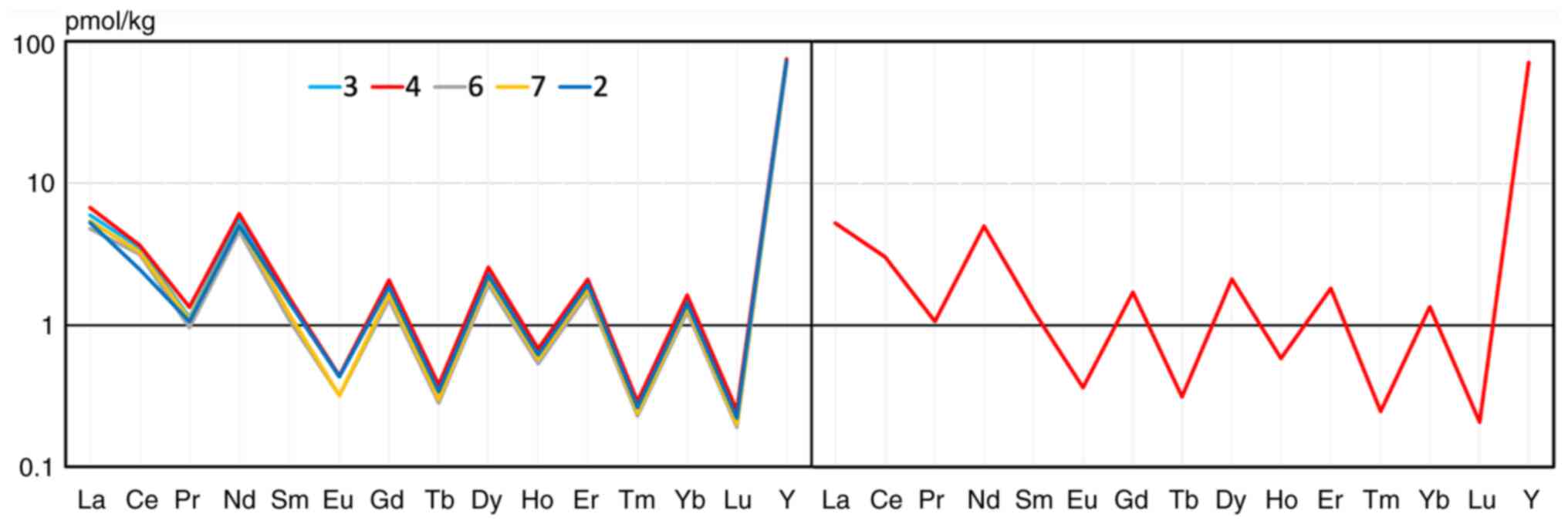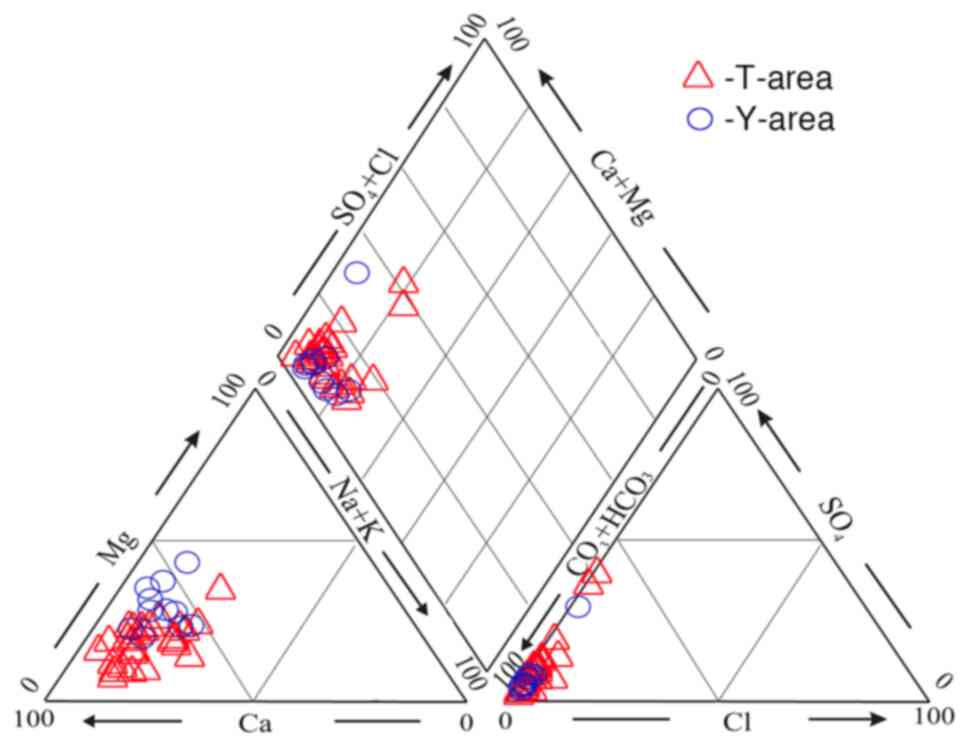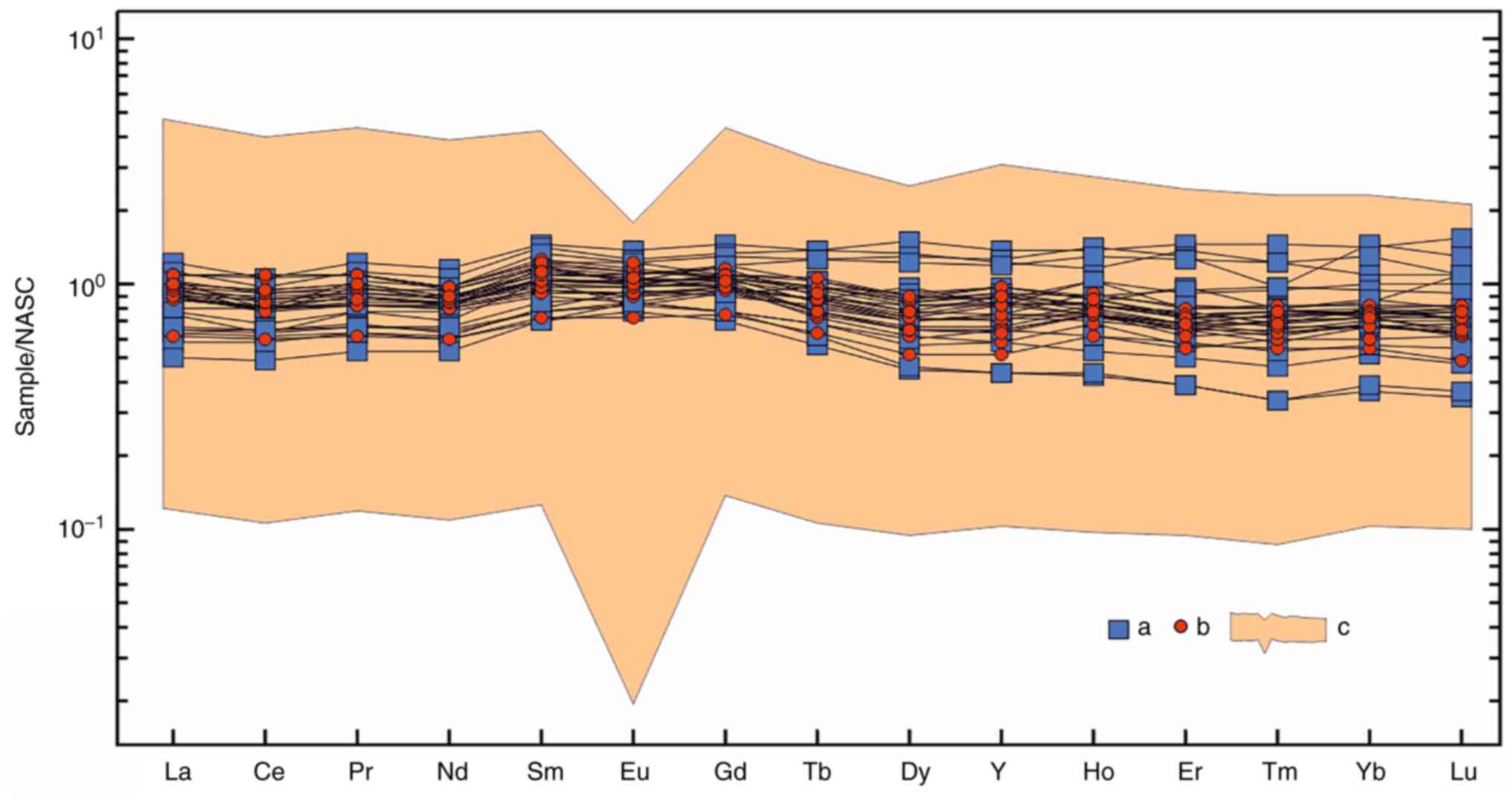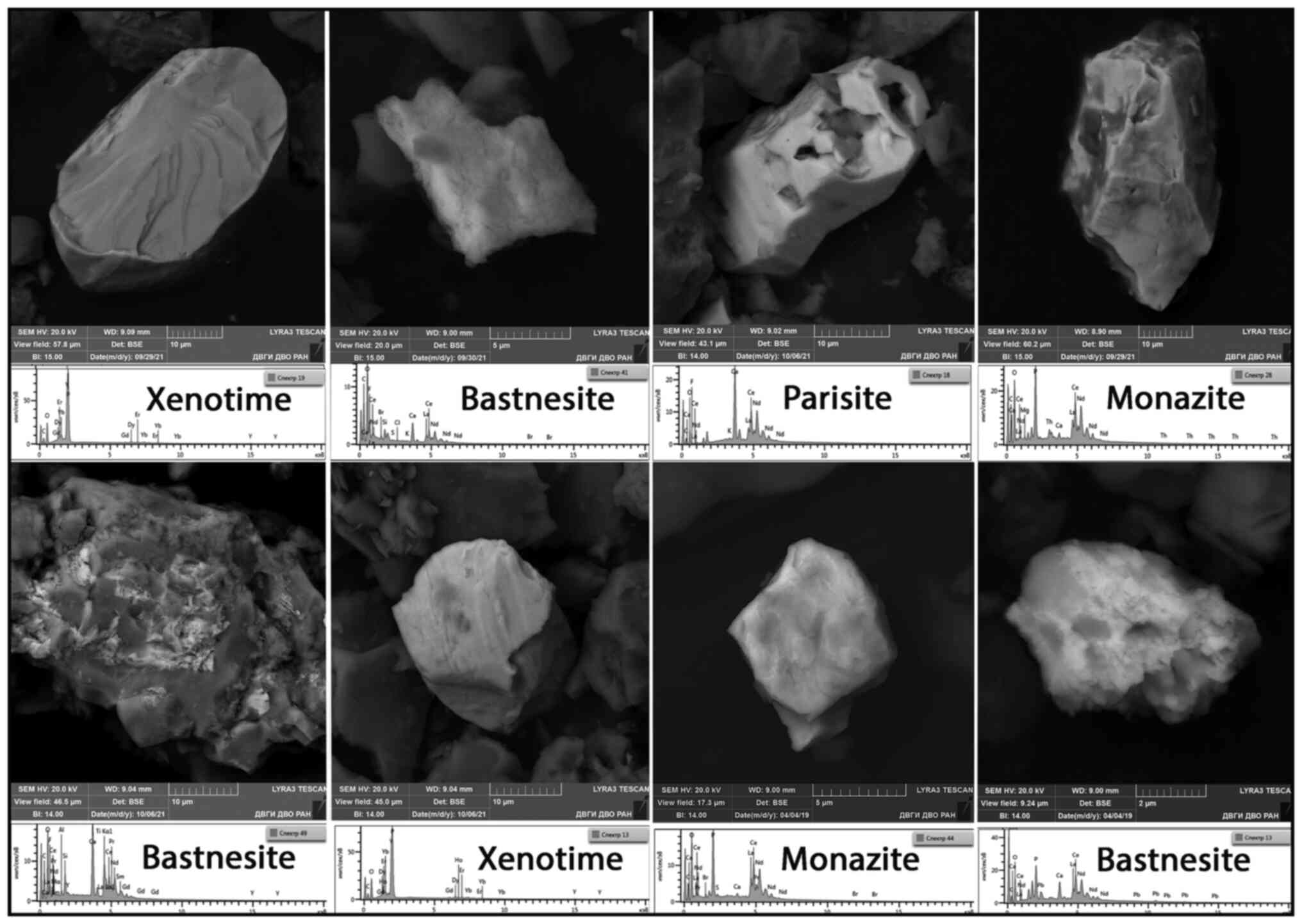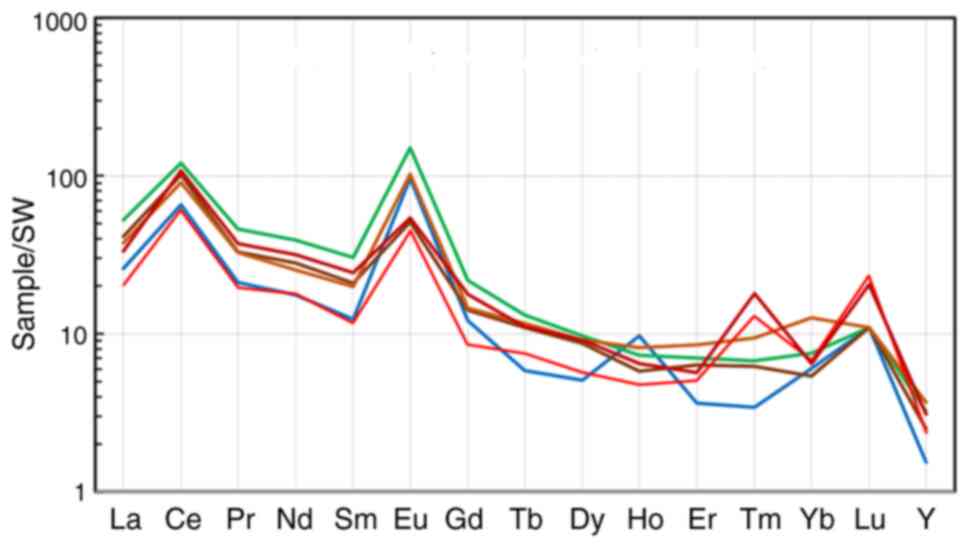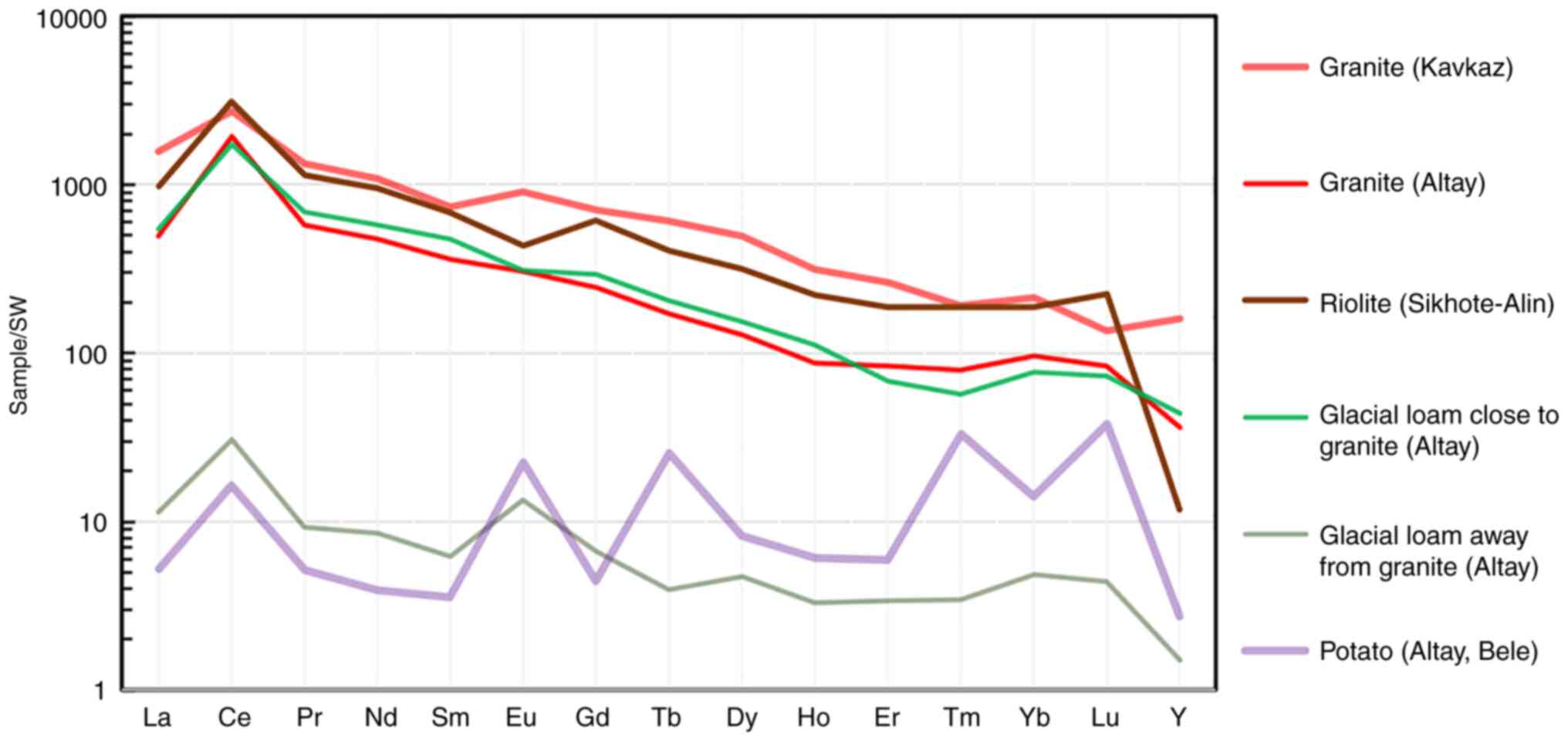|
1
|
Panichev AM, Golokhvast KS, Gulkov AN and
Сhekryzhov IY: Geophagy in animals and geology of Kudurs (mineral
licks): A review of Russian publications. Environ Geochemistry
Health. 35:133–152. 2013.PubMed/NCBI View Article : Google Scholar
|
|
2
|
Kreulen DA: Lick use by large herbivores:
A review of benefits and banes of soil consumption. Mammal Rev.
15:107–123. 1985.
|
|
3
|
Panichev AM: Geophagia in the worlds of
animals and humans. Moscow, Nauka, pp223, 1990 (In Russian).
|
|
4
|
Klaus G and Schmid B: Geophagy at natural
licks and mammal ecology: A review. Mammalia. 62:482–498. 1998.
|
|
5
|
Abrahams PW: Geophagy (soil consumption)
and iron supplementation in Uganda. Trop Med Int Helth. 2:617–623.
1997.PubMed/NCBI View Article : Google Scholar
|
|
6
|
Ketch LA, Malloch D, Mahaney WC and
Huffman MA: Comparative microbial analysis and clay mineralogy of
soil eaten by chimpanzees (Pan troglodytes schweinfurhii) in
Tanzania. Soil Biol Biochemistry. 33:199–203. 2001.
|
|
7
|
Krishnamani R and Mahaney WC: Geophagy
among primates: Adaptive significance and ecological consequences.
Anim Behav. 59:899–915. 2002.PubMed/NCBI View Article : Google Scholar
|
|
8
|
Wilson MJ: Сlay mineralogical and related
characteristics of geophagic materials. J Chem Ecol. 29:1525–1547.
2003.PubMed/NCBI View Article : Google Scholar
|
|
9
|
Gilardi JD, Duffey SS, Munn CA and Tell L:
Biochemical functions of geophagy in parrots: Detoxification of
dietary toxins and cytoprotective effects. J Chem Ecol. 25:897–922.
1999.
|
|
10
|
Houston DC, Gilardi JD and Hall AJ: Soil
consumption by elephants might help to minimize the toxic effects
of plant secondary compounds in forest browse. Mammal Rev.
31:249–254. 2001.
|
|
11
|
Ekosse GI, Chistyakov KV, Rozanov AB,
Bashkirova NN, Dultz S, Polekhovsky YS and Lessovaia SN: Landscape
settings and mineralogy of some geophagic clay occurrences in South
Africa. In: Frank-Kamenetskaya OV, Vlasov D, Panova E, Lessovaia S,
(eds.): Processes and Phenomena on the Boundary Between Biogenic
and Abiogenic Nature. Lecture Notes in Earth System Sciences, Cham,
pp785-801, 2020.
|
|
12
|
Panichev AM: Rare earth elements: Review
of medical and biological properties and their abundance in the
rock materials and mineralized spring waters in the context of
animal and human geophagia reasons evaluation. Achievements Life
Sci. 9:95–103. 2015.
|
|
13
|
Panichev AM: Geophagia: Causes of the
phenomenon. Priroda. 25–35. 2016.(In Russian).
|
|
14
|
Burchfield SR, Elich MS and Woods SC:
Geophagia in response to stress and arthritis. Physiol Behavior.
19:265–267. 1977.PubMed/NCBI View Article : Google Scholar
|
|
15
|
Panichev AM, Baranovskaya NV, Seryodkin
IV, Chekryzhov IY, Vakh EA, Soktoev BR, Belyanovskaya AI,
Makarevich RA, Lutsenko TN, Popov NY, et al: Landscape REE
anomalies and the cause of geophagy in wild animals at kudurs
(mineral salt licks) in the Sikhote-Alin (Primorsky Krai, Russia).
Environ Geochem Health. 44:1137–1160. 2021.PubMed/NCBI View Article : Google Scholar
|
|
16
|
Panichev AM, Baranovskaya NV, Chekryzhov
LY, Kalinkin YN, Kholodov AS, Spandidos DA, Tsatsakis A and
Golokhvast KS: Kudurs (mineral licks) on ultrabasic rocks in the
Altai Mountains, Russia. World Acad Sci J. 5(2)2023.
|
|
17
|
Panichev AM, Seryodkin IV, Kalinkin YN,
Makarevich RA, Stolyarova TA, Sergievich AA and Khoroshikh PP:
Development of the ‘rare-earth’ hypothesis to explain the reasons
of geophagy in Teletskoye Lake area kudurs (Gorny Altai, Russia).
Environ Geochem Health. 40:1299–1316. 2018.PubMed/NCBI View Article : Google Scholar
|
|
18
|
Sobanskiy GG: Animals of the Altai. Part
1: Large carnivores and ungulates. Novosibirsk-Moscow: Association
of Scientific Editions KMK, pp414, 2008 (In Russian).
|
|
19
|
Wei ZG, Yin M, Zhang X, Hong FS, Li B, Tao
Y, Zhao GW and Yan CH: Rare earth elements in naturally grown fern
Dicranopteris linears in relation to their variation in soils in
South-Jiangxi region (Southern China). Environ Pollut. 114:345–355.
2001.PubMed/NCBI View Article : Google Scholar
|
|
20
|
Bromley GF and Kucherenko SP: Ungulates of
the south of the USSR Far East. Moscow, Nauka, pp305, 1983 (In
Russian).
|
|
21
|
Zhang J and Nozaki Y: Rare earth
elementsand yttrium in seawater: ICP-MS determinations in the East
Caroline, Coral Sea, and South Fiji basins of the western South
Pacific Ocean. Geochimica et Cosmochimic Acta. 60:4631–4644.
1996.
|
|
22
|
Alibo DS and Nozaki Y: Rare earth elements
in seawater: Particle association, shale-normalization, and Ce
oxidation. Geochimica et Cosmochimica Acta. 63:363–372. 1999.
|
|
23
|
Gaillardet J, Viers J and Dupre B: Trace
elements in rivers waters. Treasure on Geochemistry. V5. Amsterdam:
Elsevier Pergamon. 5:225–272. 2004.
|
|
24
|
Gromet LP, Dymek RF, Haskin LA and Korotev
RL: The ‘North American shale composite’; its compilation, major
and trace element characteristics. Geochimica et Cosmochimica Acta.
48:2469–2482. 1984.
|
|
25
|
Sun SS and McDonough WF: Chemical and
isotopic systematics of ocean basalts implications for mantle
composition and processes. Geological Society, London, Special
Publications. 42:313–345. 1989.
|
|
26
|
Panichev AM, Chekryzhov IY, Stolyarova TA,
Mitina EI, Trepet SA, Sergievich AA and Khoroshikh AA: Results of
mineralogical-geochemical researches of two high-mountain kudurs
within territory of Caucasus. Environ Earth Sci. 76(749)2017.
|
|
27
|
Rice CG: Mineral lick visitation by
mountain goats, Oreamnos americanus. Can Field Naturalist.
124:225–237. 2010.
|
|
28
|
Bgatov VI, Panichev AM, Sobanskii GG, Van
AV and Budnikov IV: Animal licks in Siberian Mountains. Bulletin of
Moscow Society of Nature Investigators. Department Biol. 93:42–53.
1988.(In Russian).
|
|
29
|
Abrahams PW: The chemistry and mineralogy
of three Savanna lick soils. J Chem Ecol. 25:2215–2228. 1999.
|
|
30
|
Ferrell RE, Vermeer DE and LeBlanc WS:
Chemical and mineralogical composition of geophagical materials.
Trace substances in environ. Health Univ Missouri. 19:47–55.
1985.
|
|
31
|
Ekosse GI and Anyangwe S: Mineralogical
and particulate morphological characterization of geophagic clayey
soils from Botswana. Bull Chem Soc Ethiop. 26:373–382. 2012.
|
|
32
|
Gebel AD: On earthy substances used as
food in Persia. Notes of the Imperial Academy of Sciences.
Saint-Petersburg. 2:126–135. 1862.(In Russian).
|
|
33
|
Redling K: Rare Earth Elements in
Agriculture with Emphasis on Animal Husbandry. Dissertation, LMU
München: Tierärztlichen Fakultät, 2006.
|
|
34
|
Blair-West IR, Coghlan JP, Denton DA,
Nelson JF, Orchard E, Scoggins BA, Wright RD, Myers K and Junqueira
CL: Physiological, morphological and behavioural abaptation to a
sodium-deficient environment by wild native Australian and
introduced species of animals. Nature. 217:922–928. 1968.PubMed/NCBI View Article : Google Scholar
|
|
35
|
Shaposhnikov FD: On salt-licking of wild
ungulates in the mountain-taiga Altai. Byulleten' Moskovskogo
Obshchestva Ispytatelei Prirody Otdel Biologicheskii. 58:3–10.
1953.(In Russian).
|
|
36
|
Mahaney WС, Milner MW, Sunmugadas K,
Hancock RGV, Aufreiter S, Wragham R and Pier HW: Analysis of
geophagy soils in Kibale Forest, Uganda. Primates. 38:159–176.
1997.
|
|
37
|
Mahaney WC, Milner MW, Muliono H, Hancock
RGV and Aufreiter S: Mineral and chemical analyses of soil eaten by
humans in Indonesia. Int J Environm Healht Research. 10:93–109.
2000.
|
|
38
|
Аnell B and Lagercrantz S: Gefagical
customs. Stud Ethnogr Upsal. 17(98)1958.
|
|
39
|
Powis DA, Clark CL and O'Brien KJ:
Lanthanum can be transported by the sodium-calcium exchange pathway
and directly triggers catecholamine release from bovine chromaffin
cells. Cell Calcium. 16:377–390. 1994.PubMed/NCBI View Article : Google Scholar
|
|
40
|
Panichev AM, Popov VK, Chekryzhov IY,
Seryodkin IV, Stolyarova TA, Zakusin SV, Sergievich AA and
Khoroshikh PP: Rare earth elements upon assessment of reasons of
the geophagy in Sikhote-Alin region (Russian Federation), Africa
and other world regions. Environ Geochem Health. 38:1255–1270.
2016.PubMed/NCBI View Article : Google Scholar
|
|
41
|
Mahaney WC and Hancock RGV: Geochemical
nalysis of African buffalo geophagic sites and dung on Mount Kenya,
East Africa. Mammalia. 54:25–32. 1990.
|
|
42
|
Mahaney WC, Watts D and Hancock RGV:
Geophagia by mountain gorillas (Gorilla gorilla beringei) in the
Virunga Mountains, Rwanda. Primates. 31:113–120. 1990.
|
|
43
|
Mahaney WC, Zippin J, Hancock RGV,
Aufreiter S, Campbell S, Malloch D, Wink M and Huffman MA:
Chemistry, mineralogy and microbiology of termite mound soils eaten
by the chimpanzees of the Mahale Mountains, Western Tanzania. J
Tropical Ecol. 15:565–588. 1999.
|
|
44
|
Dubinin AV: Geochemistry of rare earth
elements in the ocean. Moscow, Nauka, pp360, 2006 (in Russian).
|
|
45
|
Kutty VR, Abraham S and Kartha CC:
Geographical distribution of endomyocardial fibrosis in South
Kerala. International Epidemiological Association. 25:1220–1207.
1996.PubMed/NCBI View Article : Google Scholar
|
|
46
|
Eapen JT: Elevated levels of cerium in
tubers from regions endemic for endomyocardial fibrosis (EMF). Bull
Environ Contam Toxicol. 60:168–170. 1998.PubMed/NCBI View Article : Google Scholar
|
|
47
|
Smith B, Chenery SRN, Cook JM, Styles MT,
Tiberindwa JV, Hampton C, Freers J, Rutakinggirwa M, Sserunjogi L,
Tomkins A and Brown CJ: Geochemical and environmental factors
controlling exposure to cerium and magnesium in Uganda. J
Geochemical Exploration. 65:1–15. 1998.
|
|
48
|
Cragin FW: Observations on Cachexia
Africana or dirt-eating. Am J Med Sci. 17:356–364. 1836.
|
|
49
|
Prasad AS: A diet of zinc or clay.
Citation classic. Current Contents. Life Sci. 34(11)1991.
|
|
50
|
Collignon R: А propos des troubles des
conduites alimentaires du pica des médecins à la géophagie des
géographes, des voyageurs et des ethnologues. Psychopathologie
Africaine. 24:385–396. 1992.
|
|
51
|
Selinus O, Finkelman RB and Centeno JA:
Medical geology. A regional synthesis. Springer, pp392, 2010.
|
|
52
|
Campuzano Maya G: Pica: el síntoma
olvidado. Medicina Laboratorio. 17:533–552. 2011.
|
|
53
|
Ramachandran KK, Balagopalan M and
Vijayakumaran Nayr P: Use pattern and chemical characterization of
the natural salt licks in Chinnar wildlife sanctuary (Research
report 94). Kerala Forest Research Institute Peechi, Thrissur, 18,
1995.
|
|
54
|
Voros J, Mahaney WC and Milner MW:
Geophagy by the bonnet macaques (Macaca radiata) of Southern India:
A preliminary analysis. Primates. 42:327–344. 2001.
|
|
55
|
Anitha JK, Joseph Sabu RG and Sundararajan
M: Monazite chemistry and its distribution along the coast of
Neendakara-Kayamkulam belt, Kerala, India. SN Applied Sciences.
2(812)2020.
|
|
56
|
Laufer B: Geophagy publications of the
field museum of natural history. Anthropological Series. 18:99.
101–198. 1930.
|















